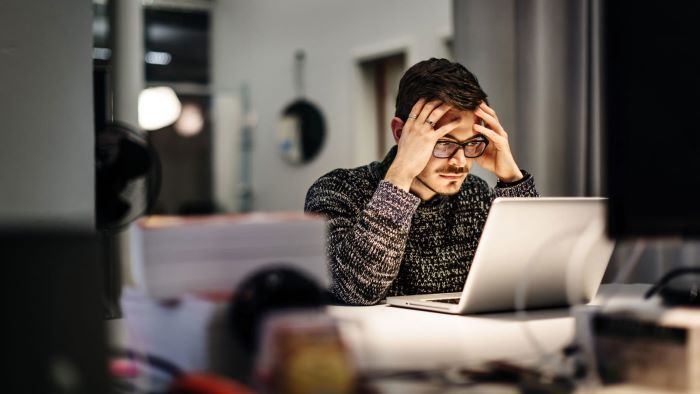Anxiety is a common experience that can affect people of all ages and backgrounds. It is a normal response to stress and can be helpful in some situations, such as motivating us to take action or be more alert. However, when anxiety becomes excessive or chronic, it can have a detrimental impact on our mental and pyhsical wellness.
Anxiety can cause a range of symptoms, including nervousness, racing thoughts, sweating, trembling, and difficulty sleeping. It can also lead to physical health problems, such as high blood pressure, heart disease, and digestive issues.
Managing anxiety is important for promoting overall well-being and mental health. By learning to calm down when feeling anxious, we can reduce the impact of anxiety on our body and mind and prevent it from interfering with our daily life.
The purpose of this article is to provide an overview of 22 techniques that can help calm down when feeling anxious. These techniques fall under four main categories: breathing techniques, mindfulness techniques, physical techniques, cognitive techniques, and lifestyle techniques. By exploring these different strategies, readers can discover what works best for them and incorporate them into their daily life.
Breathing Techniques
Breathing techniques are a simple and effective way to calm down when feeling anxious. They work by slowing down the heart rate and relaxing the body, which in turn reduces feelings of stress and anxiety.
Some effective breathing techniques include:
Deep breathing exercises: This involves taking slow, deep breaths in through the nose and out through the mouth. This can be done anywhere, anytime, and is especially useful during moments of high stress.
Progressive muscle relaxation technique: This involves tensing and then relaxing different muscle groups in the body, starting from the feet and working up to the head. This technique helps to release physical tension and promote relaxation.
Alternate nostril breathing technique: This technique involves breathing in through one nostril while closing the other with your finger, then switching to breathe in through the other nostril while closing the first one with your finger. This technique balances the nervous system and helps to promote a sense of calm.
Mindfulness Techniques
Mindfulness techniques involve becoming more aware of the present moment and accepting it without judgment. They can be helpful in reducing anxiety by promoting relaxation and reducing the impact of negative thoughts.
Some effective mindfulness techniques include:
Mindful meditation: This involves focusing on the present moment and observing your thoughts and emotions without judgment. It can be done through guided meditations or simply by sitting in silence and focusing on your breath.
Body scan meditation: This involves paying attention to different parts of your body, from your toes to your head, and observing any sensations or tension. By doing this, you can release physical tension and promote relaxation.
Visualization techniques: This involves creating a mental image or scenario that promotes relaxation and calmness. For example, you might imagine yourself lying on a beach or walking through a peaceful forest.
Physical Techniques
Physical techniques involve using the body to promote relaxation and reduce anxiety. These techniques can be helpful in releasing physical tension and improving overall mood.
Some effective physical techniques include:
Yoga poses: Yoga is a mind-body practice that combines physical postures with breathing techniques and meditation. It can be helpful in reducing stress and tension, improving flexibility, and promoting relaxation.
Exercise and physical activity: Exercise releases endorphins, which are natural mood-boosters. It can be any form of physical activity that you enjoy, such as walking, dancing, or swimming.
Self-massage techniques: These involve using your hands or a massage tool to apply pressure to different parts of your body, such as your neck, shoulders, or feet. This can be helpful in releasing physical tension and promoting relaxation.
Cognitive Techniques
Cognitive techniques involve changing negative thought patterns and promoting positive thinking. These techniques can be helpful in reducing anxiety by shifting focus away from negative thoughts and promoting a more positive outlook.
Some effective cognitive techniques include:
Positive self-talk: This involves countering negative thoughts with positive affirmations. For example, if you are feeling anxious about a job interview, you might say to yourself, “I am confident and capable.”
Reframing techniques: This involves looking at a situation from a different perspective and finding a more positive or balanced view. For example, instead of thinking, “I’ll never be able to do this,” you might reframe the thought to, “This is challenging, but I can learn and improve.”
Writing techniques: Writing can be a helpful way to process and manage anxiety. Techniques such as journaling and gratitude lists can help to shift focus away from negative thoughts and create a more positive mindset.
Lifestyle Techniques
Lifestyle techniques involve making changes to your daily habits and routines to promote overall well-being and reduce stress. These techniques can be helpful in managing anxiety by creating stability and promoting relaxation.
Some effective lifestyle techniques include:
Creating a routine and schedule: Having a predictable routine can provide a sense of stability and reduce stress. This might include setting a regular sleep schedule, establishing a morning routine, or planning out your day in advance.
Dietary changes: Certain foods and drinks can exacerbate anxiety symptoms, such as caffeine and sugar. Making changes to your diet, such as reducing caffeine intake or eating more whole foods, can support the nervous system and promote overall health.
Relaxation techniques: Taking time to relax and unwind can be helpful in reducing anxiety. This might include taking a warm bath, practicing deep breathing exercises, or drinking a calming herbal tea.
External Support
External support involves seeking help and resources outside of yourself to manage anxiety. This might include seeking professional help, connecting with loved ones, or joining a support group.
Some effective external support techniques include:
Seeking support from a therapist or counselor: A mental health professional can provide guidance and support in managing anxiety.
Connecting with friends and loved ones: Emotional support from loved ones can be helpful in managing anxiety. This might involve talking with a trusted friend or family member, or participating in a group activity with others.
Joining a support group or seeking community resources: There are many resources available for managing anxiety, such as support groups, online forums, and community organizations. These resources can provide a sense of community and support in managing anxiety.
Conclusion
Anxiety can be a debilitating condition that affects both your mind and body’s wellness. However, there are many techniques that can be used to manage anxiety and promote overall well-being. In this article, we have explored 22 different techniques for calming down when feeling anxious. These techniques include breathing exercises, mindfulness techniques, physical techniques, cognitive techniques, lifestyle changes, and seeking external support. By incorporating these techniques into your daily routine, you can reduce anxiety symptoms and improve your overall quality of life. Remember, managing anxiety is a journey, and it may take time to find what works best for you. With patience and persistence, however, it is possible to live a fulfilling life free from the grips of anxiety.





